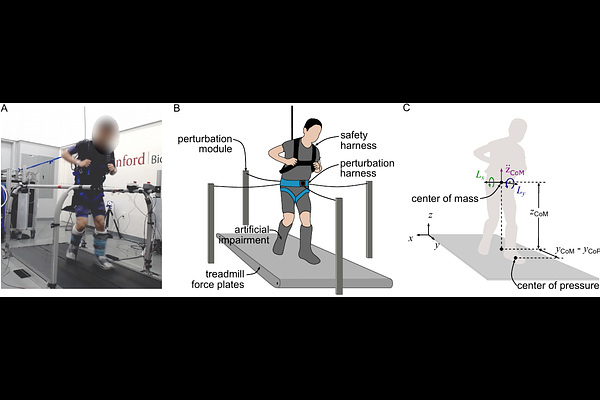Perturbation Recovery Time Identifies Subtle Human Balance Impairments and Features

Perturbation Recovery Time Identifies Subtle Human Balance Impairments and Features
Wu, J.; Raitor, M.; Truong, T.; Liu, C. K.; Collins, S. H.
AbstractFalls are a leading cause of injury and growing healthcare care costs, particularly in aging populations, yet subtle balance impairments often go undetected until severe problems arise. Accurately quantifying human balance has remained a critical challenge. Here, we introduce perturbation recovery time, a novel balance metric inspired by nonlinear dynamic system theory that quantifies the duration required for post-perturbation deviations to return to steady-state gait consistently. Unlike traditional assessments that rely on regular walking patterns, we used external perturbations to uncover hidden balance mechanisms that may not appear during steady-state walking. We identified key kinematic balance features, including the anterior-posterior distance between the center of mass and the center of pressure, whole-body angular momentum in the frontal and sagittal planes, and vertical center of mass position and acceleration, which encode significant balance information and enhance the sensitivity of the metric. These features reinforce the importance of foot placement, inverted pendulum dynamics, push-off control, and trunk motion to maintain human balance. The perturbation recovery time metric effectively identified subtle balance changes caused by controlled artificial impairments of sensing, actuation, and consistency. These findings demonstrate that the recovery process following external walking perturbations encodes critical information for quantifying human balance, offering a promising approach for early detection of balance impairments.